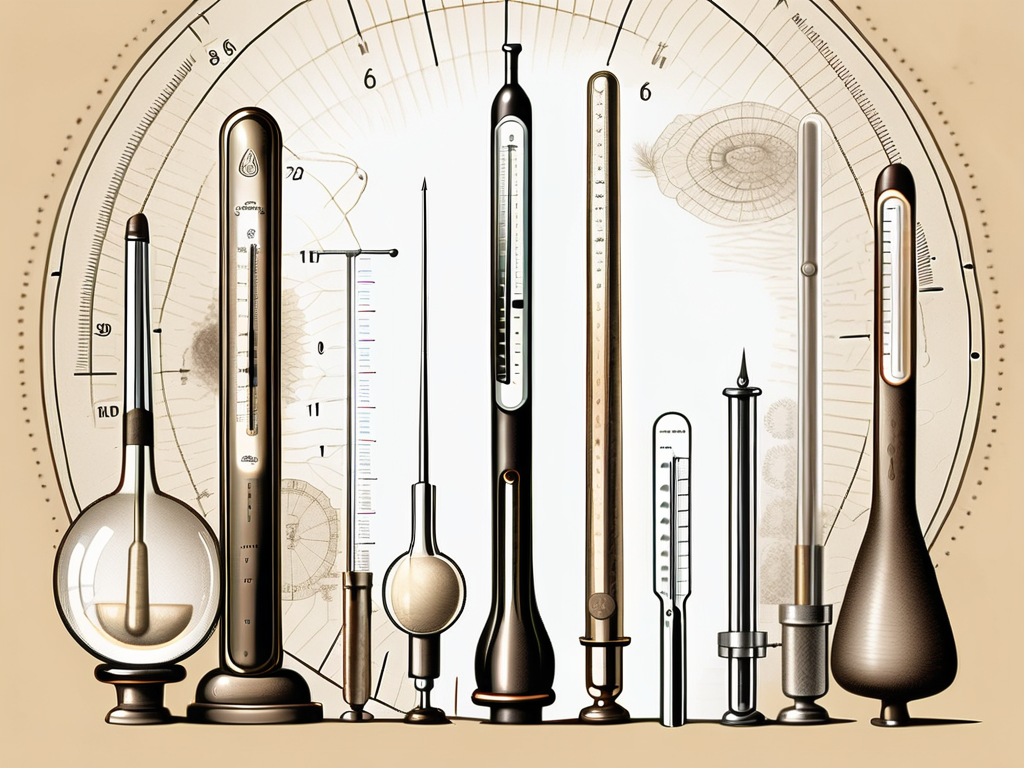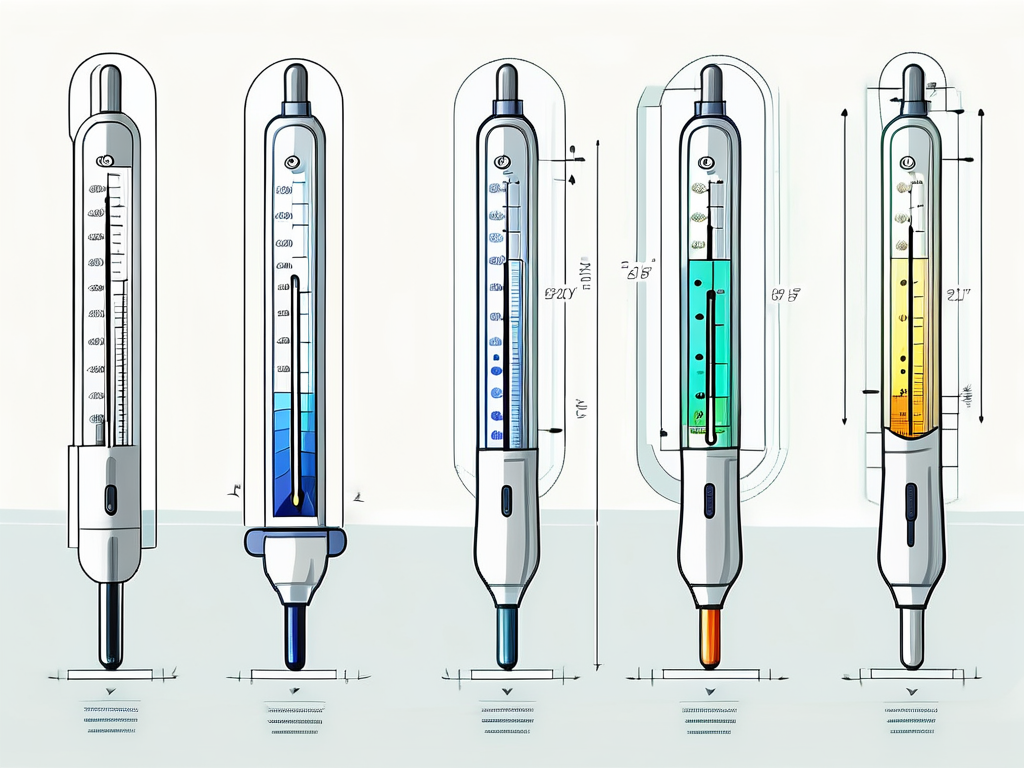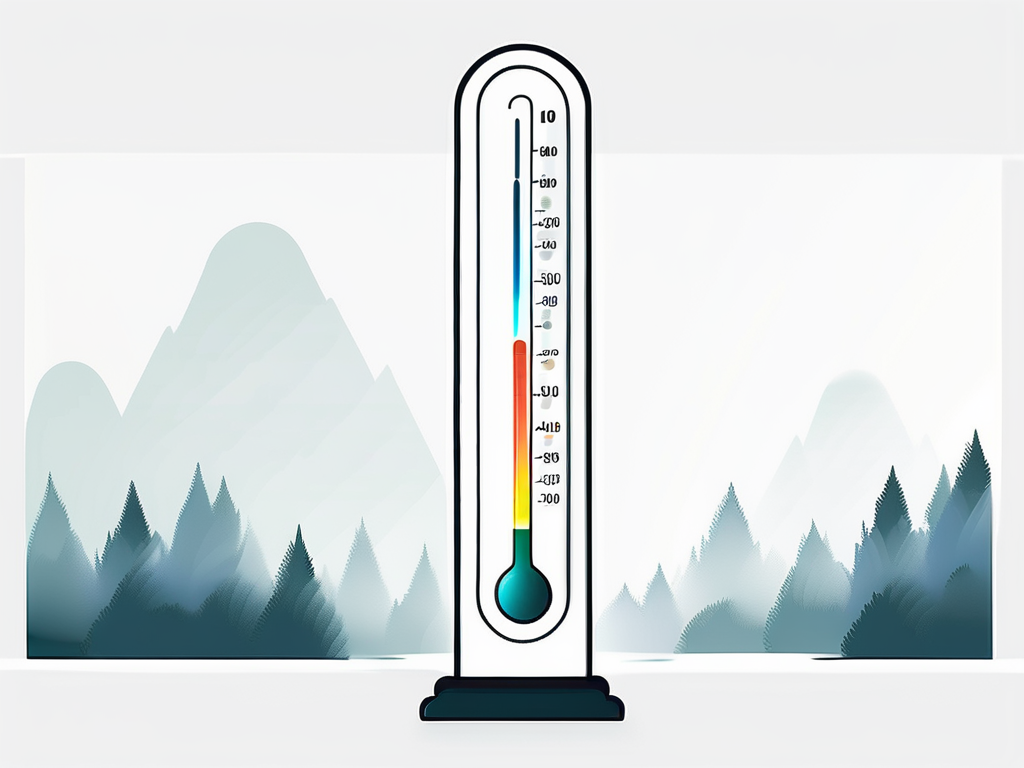The psychrometer, a vital tool in the field of humidity control, is a device used to measure the relative humidity in the atmosphere. This instrument, which comes in two primary forms, the wet-bulb and dry-bulb psychrometers, has been instrumental in various fields such as meteorology, HVAC systems, and even in the health sector. This article will delve into the intricacies of the psychrometer, its types, how it works, its applications, and its role in humidity control.
Understanding the psychrometer and its function in humidity control requires a basic understanding of humidity itself. Humidity refers to the amount of water vapor present in the air. It’s a crucial aspect of weather forecasting, climate control in buildings, and even in maintaining human health and comfort. The psychrometer, by measuring relative humidity, provides valuable data that can be used to control and regulate these areas.
History of the Psychrometer
The psychrometer’s history dates back to the 15th century, when Leonardo da Vinci invented a primitive version of the device. However, it was not until the 18th century that the psychrometer was developed into a more practical and reliable instrument for measuring humidity. The credit for this development goes to Johann Heinrich Lambert, a Swiss physicist and mathematician.

Over the years, the design and functionality of the psychrometer have been refined and improved. Today, digital psychrometers, which offer more precise readings and are easier to use, have largely replaced traditional psychrometers. Despite these advancements, the basic principle behind the psychrometer’s operation remains the same.
Leonardo da Vinci’s Contribution
Leonardo da Vinci, the renowned Italian polymath, is known for his contributions to various fields, including art, science, music, and engineering. Among his lesser-known inventions is a rudimentary device for measuring humidity, which can be considered a precursor to the modern psychrometer. This device, however, was not as accurate or reliable as the psychrometers we use today.
Da Vinci’s device was based on the principle of evaporative cooling, the same principle that modern psychrometers use. It consisted of a water-filled globe that was swung around in the air. As the water evaporated, it cooled the globe, and by measuring this temperature change, one could estimate the humidity of the air. Despite its simplicity, this device laid the foundation for the development of more advanced humidity-measuring instruments.
Johann Heinrich Lambert’s Contribution
Johann Heinrich Lambert, a Swiss physicist and mathematician, is credited with developing the psychrometer into a practical instrument for measuring humidity. In the 18th century, he introduced the concept of using two thermometers, one dry and one wet, to measure humidity. This design, known as the wet-and-dry bulb psychrometer, is still in use today.
Lambert’s psychrometer worked by comparing the temperatures of the two thermometers after they had been exposed to the air. The wet bulb thermometer, covered with a water-soaked cloth, would cool due to evaporation, while the dry bulb thermometer would remain at the ambient temperature. By comparing the two temperatures, one could calculate the relative humidity of the air. This was a significant advancement in the field of humidity measurement and control.
Types of Psychrometers
There are two main types of psychrometers: the wet-and-dry bulb psychrometer and the sling psychrometer. Both types use the principle of evaporative cooling to measure humidity, but they differ in their design and operation.
The wet-and-dry bulb psychrometer, also known as a stationary psychrometer, consists of two thermometers mounted on a stand. One thermometer is kept dry, while the other is covered with a water-soaked cloth. The sling psychrometer, on the other hand, consists of two thermometers mounted on a rotating frame. The user swings the frame in the air, causing the wet bulb thermometer to cool due to evaporation.
Wet-and-Dry Bulb Psychrometer
The wet-and-dry bulb psychrometer is the more common type of psychrometer. It is often used in stationary applications, such as weather stations and climate control systems in buildings. This type of psychrometer is easy to use and provides accurate measurements of relative humidity.
The operation of the wet-and-dry bulb psychrometer is based on the principle of evaporative cooling. The wet bulb thermometer, covered with a water-soaked cloth, cools as the water evaporates. The rate of evaporation, and thus the amount of cooling, depends on the humidity of the air. The drier the air, the faster the water evaporates, and the cooler the wet bulb thermometer becomes. By comparing the temperatures of the wet and dry bulb thermometers, one can calculate the relative humidity of the air.
Sling Psychrometer
The sling psychrometer is a portable version of the wet-and-dry bulb psychrometer. It is often used in field applications, such as outdoor weather forecasting and environmental research. The sling psychrometer is also easy to use and provides accurate measurements of relative humidity.
The operation of the sling psychrometer is similar to that of the wet-and-dry bulb psychrometer. The user swings the device in the air, causing the wet bulb thermometer to cool due to evaporation. The rate of cooling depends on the humidity of the air, with drier air causing faster evaporation and greater cooling. By comparing the temperatures of the wet and dry bulb thermometers, one can calculate the relative humidity of the air.
How Psychrometers Work
The operation of psychrometers is based on the principle of evaporative cooling. When water evaporates, it absorbs heat from its surroundings, causing a decrease in temperature. This cooling effect is more pronounced in dry air, where evaporation occurs more rapidly, than in humid air, where evaporation is slower. By measuring this temperature change, psychrometers can estimate the relative humidity of the air.

The psychrometer uses two thermometers to measure this temperature change. One thermometer, known as the dry bulb, is exposed to the air and measures the ambient temperature. The other thermometer, known as the wet bulb, is covered with a water-soaked cloth and measures the temperature after evaporation has occurred. The difference between the two temperatures, known as the wet-bulb depression, is used to calculate the relative humidity.
Evaporative Cooling
Evaporative cooling is the process by which water absorbs heat from its surroundings as it evaporates. This process is responsible for the cooling effect you feel when you sweat. As the sweat evaporates from your skin, it absorbs heat, causing your skin to feel cooler. The same principle applies to the wet bulb thermometer of a psychrometer.
The rate of evaporative cooling, and thus the amount of cooling, depends on the humidity of the air. In dry air, where there is less water vapor, evaporation occurs more rapidly, leading to greater cooling. In humid air, where there is more water vapor, evaporation is slower, leading to less cooling. By measuring this cooling effect, a psychrometer can estimate the relative humidity of the air.
Wet-Bulb Depression
The wet-bulb depression is the difference in temperature between the dry bulb and the wet bulb thermometers of a psychrometer. This difference is a measure of the cooling effect caused by evaporation. The larger the wet-bulb depression, the drier the air, and the lower the relative humidity.
To calculate the relative humidity from the wet-bulb depression, one can use a psychrometric chart or a mathematical formula. The psychrometric chart is a graphical representation of the relationship between temperature, humidity, and wet-bulb depression. By locating the dry bulb temperature and the wet-bulb depression on the chart, one can find the corresponding relative humidity. The mathematical formula, on the other hand, involves a more complex calculation, but it provides a more precise result.
Applications of Psychrometers
Psychrometers are used in a variety of fields to measure and control humidity. These include meteorology, HVAC systems, agriculture, and health care. In each of these fields, the data provided by psychrometers is used to create optimal conditions for various activities and processes.
In meteorology, psychrometers are used to measure the humidity of the atmosphere, which is a crucial factor in weather forecasting. In HVAC systems, they are used to regulate the humidity of indoor environments, improving comfort and preventing damage to buildings and equipment. In agriculture, they are used to monitor and control the humidity of greenhouses and storage facilities, ensuring the health and quality of crops. In health care, they are used to maintain the humidity of hospital wards and operating rooms, promoting patient comfort and preventing the spread of airborne diseases.
Meteorology
In meteorology, the measurement of humidity is crucial for weather forecasting. Humidity affects various weather phenomena, including cloud formation, precipitation, and temperature. By measuring the humidity of the atmosphere, meteorologists can predict these phenomena and provide accurate weather forecasts.
Psychrometers are commonly used in weather stations to measure atmospheric humidity. These devices provide accurate and reliable measurements, which are essential for accurate weather forecasting. The data collected by psychrometers is also used in climate research, helping scientists understand and predict changes in the Earth’s climate.
HVAC Systems
In heating, ventilation, and air conditioning (HVAC) systems, humidity control is essential for maintaining indoor comfort and preventing damage to buildings and equipment. High humidity can cause discomfort, promote the growth of mold and mildew, and damage materials such as wood and electronics. Low humidity, on the other hand, can cause dry skin and respiratory problems, and increase static electricity.
Psychrometers are used in HVAC systems to measure and control indoor humidity. By providing accurate measurements of relative humidity, these devices help maintain optimal conditions in homes, offices, and other indoor environments. They also help conserve energy by allowing the HVAC system to operate more efficiently.
Agriculture
In agriculture, humidity control is crucial for the health and quality of crops. High humidity can promote the growth of mold and other pathogens, while low humidity can cause dehydration and stress in plants. By monitoring and controlling the humidity of greenhouses and storage facilities, farmers can ensure the health and quality of their crops.
Psychrometers are commonly used in agriculture to measure and control humidity. These devices provide accurate and reliable measurements, which are essential for maintaining optimal growing conditions. The data collected by psychrometers is also used in agricultural research, helping scientists develop more efficient and sustainable farming practices.
Health Care
In health care, humidity control is important for patient comfort and the prevention of airborne diseases. High humidity can promote the growth of mold and other pathogens, while low humidity can cause dry skin and respiratory problems. By maintaining the humidity of hospital wards and operating rooms at optimal levels, health care providers can promote patient comfort and prevent the spread of diseases.
Psychrometers are used in health care facilities to measure and control humidity. These devices provide accurate and reliable measurements, which are essential for maintaining optimal conditions. The data collected by psychrometers is also used in medical research, helping scientists understand the effects of humidity on human health and disease transmission.
Conclusion
The psychrometer, with its ability to measure relative humidity, plays a crucial role in various fields, from meteorology to health care. By providing accurate and reliable measurements of humidity, this device helps maintain optimal conditions for various activities and processes, improving comfort, health, and productivity. Despite its simplicity, the psychrometer is a powerful tool in the field of humidity control.

As we continue to face challenges related to climate change and indoor air quality, the importance of humidity control and the role of devices like the psychrometer cannot be overstated. Whether it’s predicting the weather, maintaining comfortable indoor environments, ensuring the health and quality of crops, or preventing the spread of diseases, the psychrometer will continue to be an indispensable tool in our efforts to understand and control the world around us.




